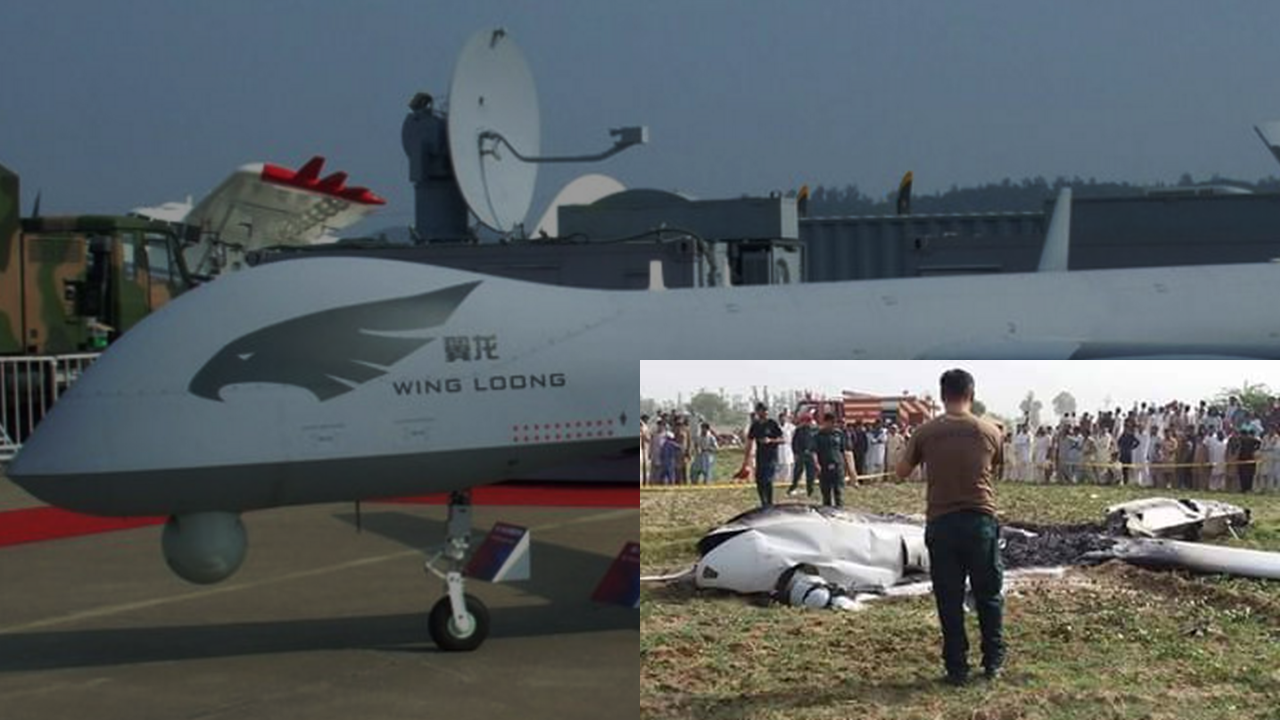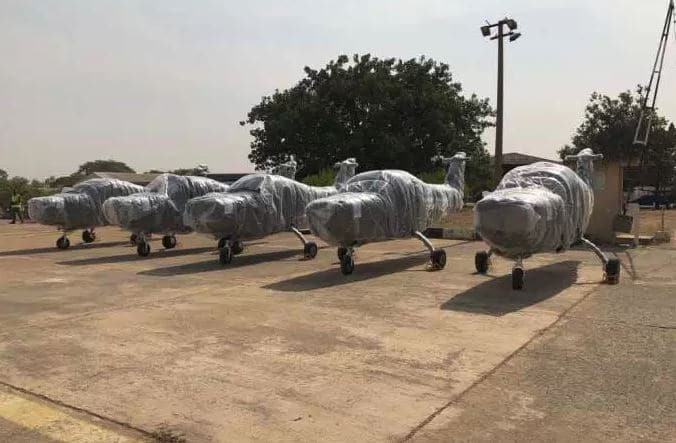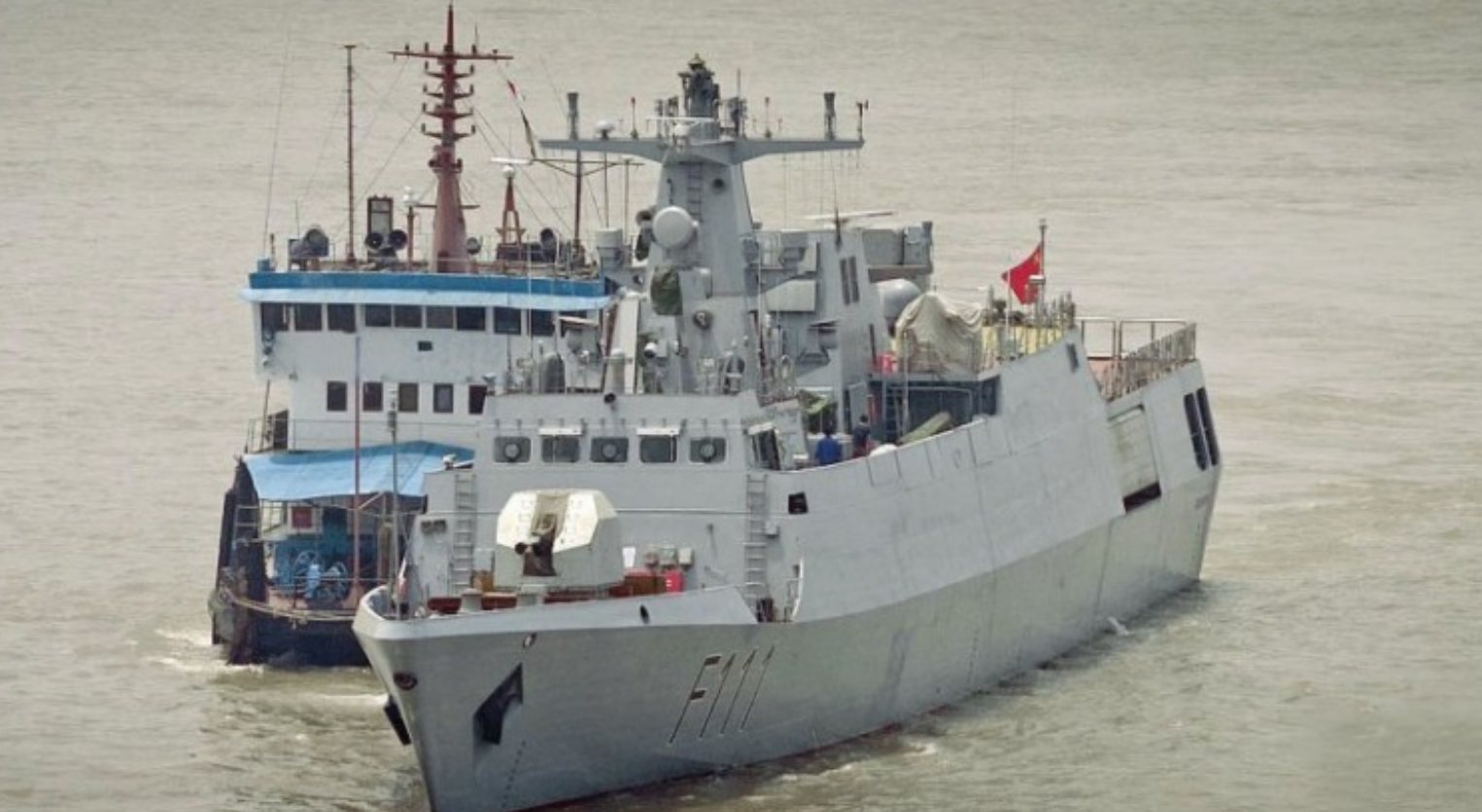2446Views 6Comments

UPDATE: Crashed UAV in Pakistan was undergoing flight tests
Update: IHS Jane’s was able to learn from a Pakistani Ministry of Defence (MoD) source that the UAV was on an “experimental flight”, thereby indicating that the drone was being evaluated.
On Saturday, a Pakistani armed forces unmanned aerial vehicle (UAV) crashed in the city of Mianwali. Fortunately, no one was hurt, and damage to the surrounding area was – at worst – minimal. The UAV make or model was not identified or disclosed.
Comment and Analysis
Numerous Pakistani and Chinese defence observers have noted that the crashed UAV bears the design traits of the Wing Loong or Pterodactyl UAV, which is produced by Chengdu Aircraft Industry Group (CAIG). The Wing Loong/Pterodactyl is a medium altitude long-endurance (MALE) UAV capable of deploying air-to-ground munitions such as laser-guided air-to-ground missiles (AGM). Its primary competitor is the CH-4, which is produced by China Aerospace Science and Technology Corporation (CASC)
The Pakistan Army and Pakistan Air Force currently operate the NESCOM Burraq, which bears a striking resemblance with the CASC CH-3A. However, with CASC’s lead drone designer alluding to a possible CH-4 purchase from Pakistan, and the wreckage of the Wing Loong/Pterodactyl, it certainly seems that Pakistan is in the process of adding another armed drone. Unlike the Burraq, the CH-4 and Wing Loong are MALE UAV designs, i.e. they possess heavier payloads and ranges compared to the Burraq.
This is not Pakistan’s first time interacting with the Wing Loong. In the late 2000s and early 2010s, it had evaluated the type, but chose CASC’s CH-3A instead. It is worth noting that Pakistan has relatively sound ties with CAIG via the JF-17, but in terms of drones, it has preferred dealing with CASC.
Pakistan has been using armed drones as part of its counterinsurgency (COIN) campaign in the Federally Administered Tribal Areas (FATA), but it would be incorrect to confine the value of these UAVs to such an environment. For Pakistan, there would be much greater long-term value in acquiring UAVs capable of long-range intelligence, surveillance and reconnaissance (ISR) missions.
A UAV with long flight endurance could potentially be equipped with stand-off range ISR equipment in the form of photo-reconnaissance or synthetic aperture radar (SAR) pods. This configuration would enable Pakistan to maintain a constant ISR umbrella along its border areas, and potentially glimpse into cross-border activity (if equipped with stand-off range ISR equipment).
For such a role, a larger design – such as the CH-5 – may be more preferable. CASC is currently waiting on the Chinese government to clear the CH-5 for export, but with an endurance of up to 30 hours and range of 2000km, this drone could be a worthy fit for an unmanned ISR strategy. With a reported payload of 900kg (enough for eight lightweight laser-guided AGMs), the CH-5 would make for a heavy-hitting attack drone as well.
In any case, the Wing Loong/Pterodactyl crash at least establishes that Pakistan’s drone aspirations have not stopped with the CH-3A. It will be worth keeping an eye out for what transpires on this front.



6 Comments
by Zaff Hundal
Pakistan needs to evolve its drone technology. The more the merrier. This is the future where you don’t put a pilot in harms way.
by Bilal Khan - Quwa
To evolve our drone technology, we will actually need to invest in the R&D of that technology. As plainly evident with the Burraq, we – at the minimum – had to work very closely with China to get an operable solution (though it wouldn’t be unfair to just say we bought the CH-3A off-the-shelf).
For an understanding of how tricky it can be to develop a capable MALE UAV, just consider Turkey and its trials with the Anka. Development of that drone started in 2004, in flew in 2010, and it has still been in development.
by Zaff Hundal
Yes Ofcourse I didn’t want to spell it out that we need to invest in more R&D because every time we do this politics comes in discussion and we all know how corrupt they are and to be honest I wanted to avoid that. Yes it will take time but as far I can remember the defence secretary was saying somiething about R&D investment and surely we need the private sector to get involved in it. I guess there is a concensus about developing them in all three spheres air sea land.
by Bilal Khan - Quwa
We could at least start getting involved in some meaningful ways. Although it’s likely the CH-4B would win these trials, I would list TAI’s Anka as the dark horse, especially since TAI and the Turkish government are eager to rope the Pakistani defence industry into the program. During the Anka’s prototype stage, TAI had PAC manufacture certain parts for the UAV.
by Zaff Hundal
Yes that is good thinking. I would like to see Pakistan engaging with Turkey and China in this regard simultaneously (a joint venture cannot happen). I guess we need not much investment than either.
by SP
The future of military aviation is in unmanned aircrafts, Pakistan needs to focus more on drones and JF-17 than wasting money with F-16 which first flew 42 years ago.